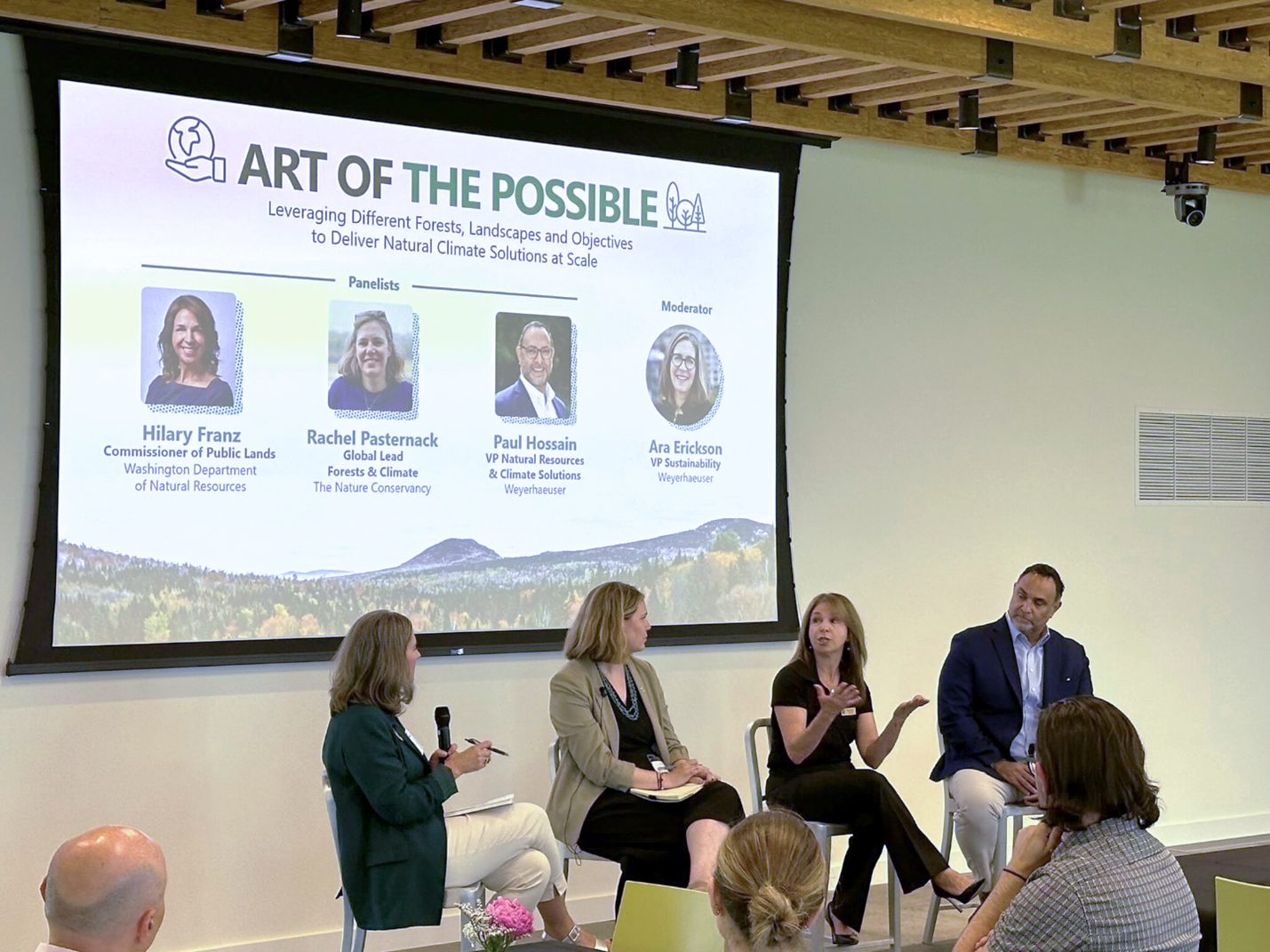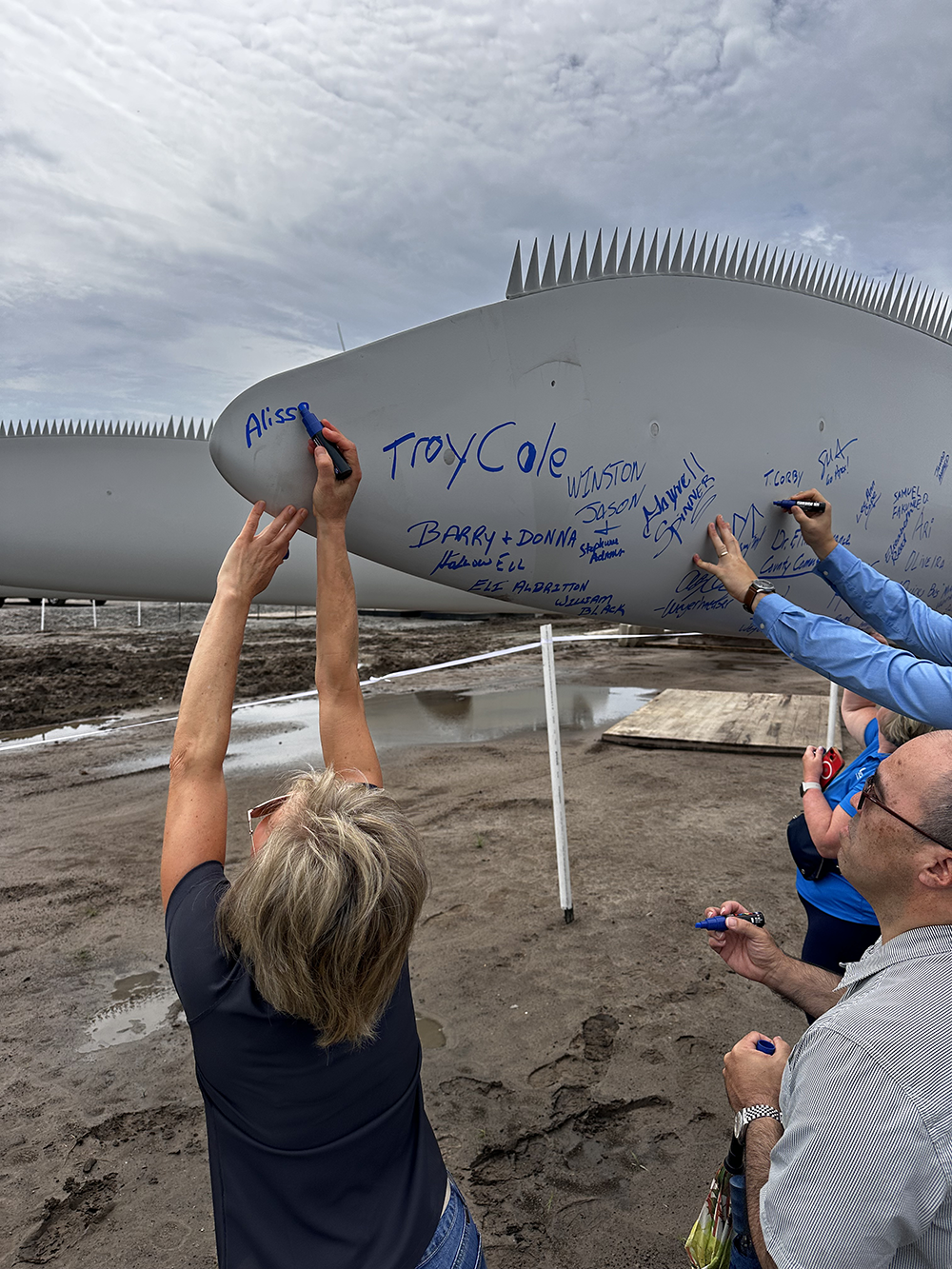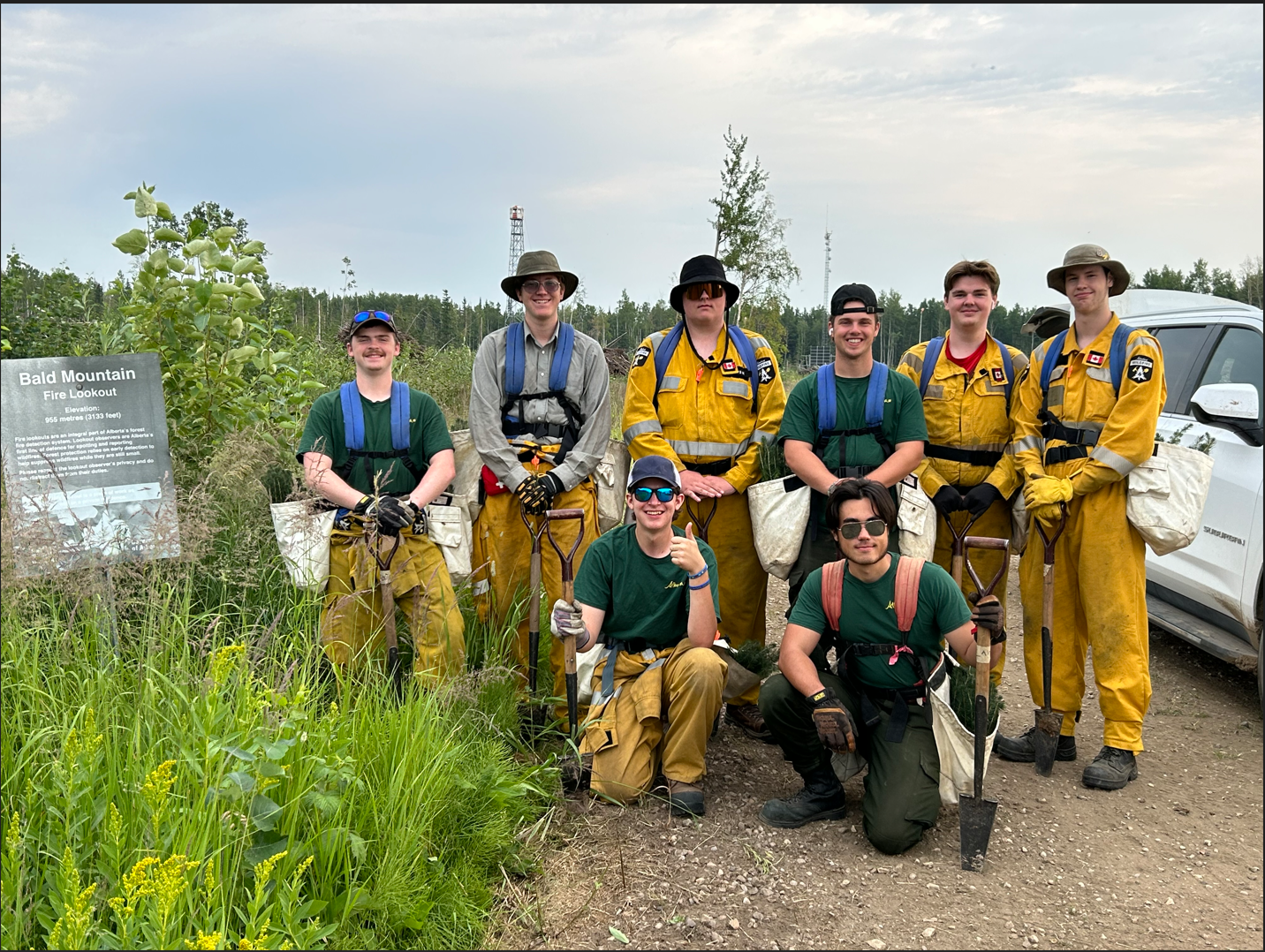
Hilary Franz, Washington's Commissioner of Public Lands, making a point at our panel discussion on July 11.
The inaugural Bloomberg Green Festival brought thousands of sustainability leaders, entrepreneurs and climate activists to Seattle last month for four days of networking, discussions and experiential learning.
For us, it was another opportunity to share our perspective and engage in important conversations around forests and climate solutions. Through two separate events — a panel discussion at our Seattle headquarters, and a tour of our Vail tree farm in southwest Washington— we invited attendees to consider and experience the many ways sustainably managed working forests provide a positive climate impact.
Forester Maria Erdmann explains how we replant after harvesting during a tour of our Vail tree farm on July 12. There are some thriving baby trees nestled among the tall grasses and flowers.
PANEL DISCUSSION: “ART OF THE POSSIBLE”
Our festival week started on July 11 with a panel discussion and rooftop happy hour at our Seattle HQ. Hilary Franz, Washington’s Commissioner of Public Lands, and Rachel Pasternack, global lead, Forests & Climate, at The Nature Conservancy, joined our own Paul Hossain, vice president of Natural Resources & Climate Solutions, for a discussion moderated by Ara Erickson, vice president of Corporate Sustainability. Though the panel wasn’t officially part of the festival, the focus of the conversation was how the public, private and conservation sectors can pursue their own goals and objectives while still delivering climate solutions across different forests and landscapes.
“We wanted to bring together people, with different perspectives and different backgrounds, in thinking about what’s possible,” Ara says. “And we wanted everyone to leave inspired to take action in the ways that make sense for where they are and what they are doing.”
Vaughan Andrews, senior program manager of Sustainability, responds to a question about carbon accounting during a tour of our Vail tree farm on July 12.
Panelists discussed how climate change is impacting forests, notably through the increased threat of wildfires; the importance of managing forest health and resilience; the role policy and economic incentives play in growing a trusted carbon market; and opportunities to layer additional climate solutions, such as renewable energy, with working forests.
Commissioner Franz summed up the discussion best when she said: “My one wish would be that we stop fighting over forests and start fighting for our forests — and in fighting for our forests recognize that everybody has value in their opinions and their experience and where they’re coming from, and that we will go faster the sooner we don’t look at each other as enemies.”
Trees on our Vail tree farm, where some forests have been harvested, replanted and grown again three times under our ownership.
FOREST TOUR: VAIL TREE FARM
The next morning, July 12, Ara, Vaughan Andrews, senior program manager of Sustainability, and Matt Peterson, senior communications manager, led about two dozen festival attendees — many of them sustainability leaders and decision-makers from top U.S. companies — on a tour of our Vail tree farm. Departing from the Seattle Space Needle, tourgoers chatted on the drive through a series of prewritten questions designed to spark conversation about working forests, climate solutions and trees.
Once on site, Ara and Vaughan were joined by Maria Erdmann, a forester at Vail since 1994. Together, they led attendees through the full cycle of sustainable forestry. Starting at a recently harvested plot, Ara invited questions about perceptions of clearcuts and, with Maria, explained how we replant and regenerate our timberlands so that our forests can remain forests forever.
To illustrate, Maria pointed to surrounding plots with trees that were planted during her career at Vail. Some were seven years old. Others about 20. Some 30 and older.
Moving deeper into the forest and stopping again, Ara and Vaughan discussed the carbon-storing potential of working forests and explained how additional climate solutions, such as renewable energy from the Skookumchuck wind farm at Vail, can be layered to deliver an even greater climate impact.
Vaughan also gave an overview of carbon accounting and highlighted the importance of trees and forests in mitigating climate change.
“If you think about a tree,” he said, pointing to a nearby stand, “about half of it is water. If you take out the water weight, about half of what remains is carbon. So, 25 percent of what you see here is carbon that has been sucked out of the atmosphere.”
Following a short break for lunch, attendees piled back into the vans and began the return trip to Seattle, bouncing along roads that wind through some of the longest held working forests on our land base — forests that in some places have been harvested, replanted and grown again by three generations of Weyerhaeuser employees.
Back at the Seattle Space Needle, reflecting on the week’s activities, our Sustainability and Communications teams left encouraged and inspired. In keeping with the spirit of the festival, our work brought together diverse perspectives, invited challenging conversations and provided an authentic learning experience — all of it in service of working forests, which remain one of the largest and most readily available solutions we have for mitigating climate change right now.


